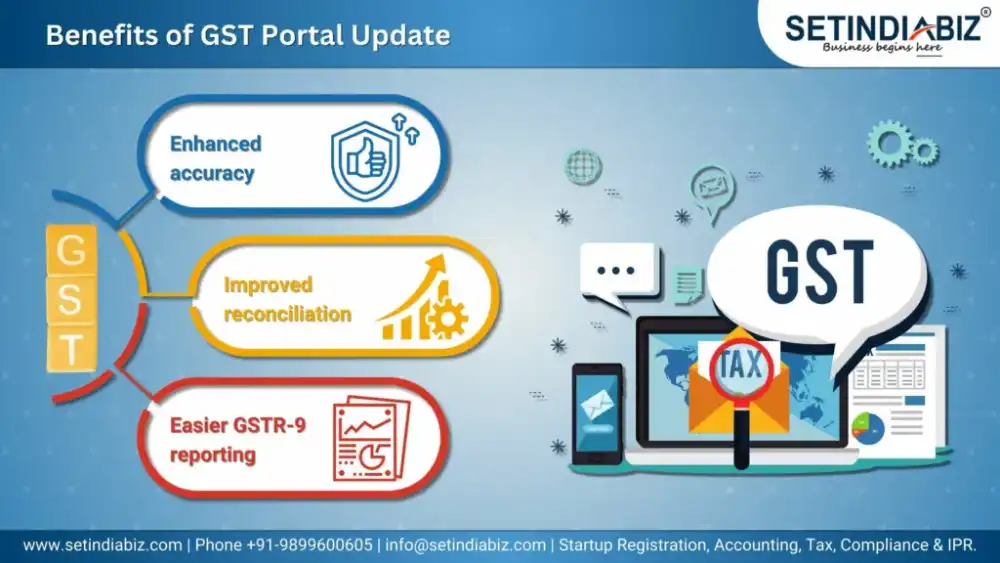Reporting Negative Values in GSTR-3B Simplified – GST Portal Update
Overview : The Goods and Services Tax (GST) portal has recently introduced a significant update, allowing taxpayers to report negative values in GSTR-3B, the summary return for regular GST taxpayers. In this blog post, we will discuss the implications of these changes, the technical terms involved, and the benefits for taxpayers. You may read the original notification at GST Council Portal at: https://gstcouncil.gov.in/142022-central-tax-dated05-jul-2022
Changes to GSTR-3B Reporting
On 17th February 2023, the GST Network (GSTN) issued an advisory on the GST portal, stating that negative values could be reported in Tables 4A and 4D of GSTR-3B. This change is applicable from January 2023 onwards, and taxpayers can find these changes in the returns filed for January 2023 and onwards.
Negative values are allowed for reporting when the value of all credit notes exceeds the total value of outward supplies and debit notes in Table 4B. This amendment in Table 4 of GSTR-3B was introduced via CGST notification no.14/2022 on 5th July 2022.
Understanding the Technical Terms
- Input Tax Credit (ITC): The tax paid on the purchase of goods and services, which can be set off against the tax liability on the sale of goods and services.
- Credit Note (CN) : A document issued by a supplier to reduce the taxable value and tax charged in an earlier invoice.
- Debit Note : A document issued by a supplier to increase the taxable value and tax charged in an earlier invoice.
- Reconciliation: The process of comparing and matching the data reported in GSTR-3B with the data in GSTR-2B to ensure accurate tax reporting.
Benefits of the Update

- Enhanced accuracy: The changes allow taxpayers to report accurate information on the input tax credit claimed, reversed, and ineligible for claims in Table 4 of GSTR-3B.
- Improved reconciliation: The auto-population of values in Table 4A(5) of GSTR-3B, including credit notes from GSTR-2B, simplifies the reconciliation process.
- Easier GSTR-9 reporting: The update will help taxpayers during the reporting of GSTR-9, the annual return, as Table 6A will reflect values net of credit note with adjustments to Table 8A. It allows for easier and more accurate comparison of values between Tables 8A and 8B.
Stepwise Process
Here are the steps on how to report negative GST liability in GSTR 3B arising out of cancellation of an already reported invoice and subsequent issue of credit note reversing the cancelled invoice:
- File the cancellation of the invoice in GSTR 1.
- File the credit note in GSTR 1.
- In GSTR 3B, under Table 4A, enter the net ITC availed after considering the credit note. If the net ITC is negative, enter the negative value in Table 4A.
- In GSTR 3B, under Table 4D(2), enter the amount of the credit note.
Here is an example:
Suppose you have an invoice for Rs. 10,000. You file this invoice in GSTR 1. You then issue a credit note for Rs. 5,000. You file this credit note in GSTR 1. In GSTR 3B, you would enter the following:
- Table 4A: Net ITC availed = Rs. 5,000 (10,000 – 5,000)
- Table 4D(2): Amount of credit note = Rs. 5,000
- This would result in a negative GST liability of Rs. 5,000 in GSTR 3B
Conclusion
The GST portal's recent update, allowing the reporting of negative values in GSTR-3B, marks a significant development in easing the tax filing process for taxpayers. With improved accuracy, easier reconciliation, and more streamlined GSTR-9 reporting, taxpayers can now navigate the GST filing process more efficiently. It is crucial for taxpayers to stay updated and follow the instructions provided by the GSTN when generating GSTR-2B and checking the system-generated GSTR-3B PDF before filing GSTR-3B.
